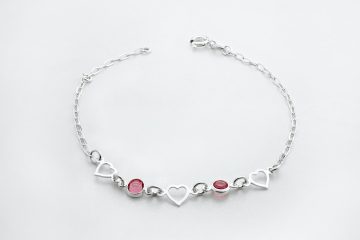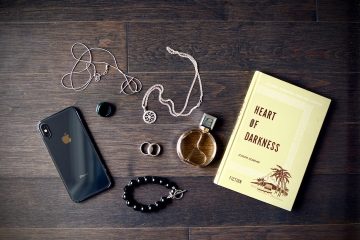When it comes to accessorizing, bracelets have become an increasingly popular choice for men. A well-chosen bracelet can add a touch of style and personality to any outfit, making it a versatile accessory for both casual and formal occasions. However, finding the perfect fit can be a challenge, as men’s wrists come in a variety of sizes. In this article, we will explore the ideal average bracelet size for men and provide some tips on how to find the perfect fit.
Understanding Men’s Wrist Sizes
Before delving into the ideal average bracelet size for men, it is important to understand the range of wrist sizes that exist. Men’s wrists can vary significantly in circumference, with some individuals having smaller, slender wrists, while others have larger, more muscular wrists. This diversity makes it essential to find a bracelet that not only fits comfortably but also suits the individual’s wrist size and shape.
Measuring Your Wrist
To determine the ideal average bracelet size for men, you first need to measure your wrist accurately. Here’s a simple guide to help you measure your wrist circumference:
1. Gather the necessary tools
: To measure your wrist, you’ll need a flexible measuring tape or a piece of string and a ruler.
2. Wrap the measuring tape or string around your wrist
: Start by wrapping the measuring tape or string around the widest part of your wrist. Ensure that it is snug but not too tight.
3. Take the measurement
: Note the measurement on the measuring tape or mark the string where it overlaps. If you’re using a string, lay it flat on a ruler to get an accurate measurement in inches or centimeters.
Determining Your Bracelet Size
Once you have measured your wrist, you can determine your bracelet size. Bracelet sizes are typically given in inches or centimeters, and they represent the length of the bracelet. To find the ideal average bracelet size for men, consider the following factors:
1. Comfort and Fit
When it comes to choosing a bracelet, comfort is key. A bracelet that is too tight may restrict blood flow and become uncomfortable to wear for extended periods. On the other hand, a bracelet that is too loose may slide around and even fall off. Finding the right balance between comfort and fit is crucial to ensure you enjoy wearing your bracelet.
2. Style and Aesthetics
Another factor to consider when determining your bracelet size is the style and aesthetics you prefer. Some men prefer a snug fit, where the bracelet sits closely around the wrist, while others may opt for a looser fit with more movement. The choice ultimately depends on your personal style and the type of bracelet you are considering.
3. Type of Bracelet
Different types of bracelets may require different sizing considerations. For example, a beaded bracelet with an elastic band may have a more forgiving fit, while a metal bracelet with a clasp may need to be a precise size to fit properly. Take into account the type of closure and the materials used in the bracelet when selecting the right size.
4. Average Bracelet Sizes
While there is no one-size-fits-all answer to the ideal bracelet size for men, there are some average sizes that can serve as a starting point. The most common bracelet sizes for men range from 7 to 9 inches (or 18 to 23 centimeters) in length. However, it is essential to remember that these sizes are just averages and may not be suitable for everyone.
Finding the Perfect Fit
Now that you have a better understanding of how to determine your bracelet size, let’s explore some tips to help you find the perfect fit:
1. Try Bracelets On
One of the simplest ways to find the perfect fit is to try bracelets on before making a purchase. Visit a jewelry store or try on different bracelets at a local boutique. Pay attention to how the bracelet feels on your wrist and ensure it meets both your comfort and aesthetic preferences.
2. Consider Adjustable Bracelets
If you’re unsure of your wrist size or prefer flexibility, consider adjustable bracelets. These bracelets often feature adjustable closures, such as sliding knots or extendable clasps, allowing you to customize the fit to your liking.
3. Consult a Jeweler
If you’re still unsure about your bracelet size or need professional guidance, don’t hesitate to consult a jeweler. A professional jeweler can accurately measure your wrist and offer personalized recommendations based on your preferences and the type of bracelet you desire.
4. Take Into Account Your Lifestyle
Consider your lifestyle when choosing a bracelet size. If you lead an active lifestyle or work in a physically demanding job, you may prefer a more secure fit to ensure the bracelet stays in place during your activities. Conversely, if you have a desk job or engage in less rigorous activities, a looser fit may be more comfortable.
5. Online Sizing Guides
Many online retailers provide sizing guides to help customers find the right bracelet size. These guides often include instructions on wrist measurement and corresponding bracelet sizes. While helpful, it is essential to remember that different retailers may have slightly different sizing standards, so cross-referencing multiple sources can be beneficial.
Conclusion
Finding the ideal average bracelet size for men is a personal journey that requires consideration of various factors such as comfort, style, and type of bracelet. Remember to measure your wrist accurately and keep in mind your personal preferences and lifestyle. Trying on bracelets, considering adjustable options, consulting a jeweler, and utilizing online sizing guides can all contribute to finding the perfect fit. Embrace the versatility and style that a well-fitted bracelet can bring to your overall appearance and enjoy the confidence it adds to your everyday look.
FAQs (Frequently Asked Questions)
Q1: Can I use a string instead of a measuring tape to measure my wrist?
Yes, you can use a string as an alternative to a measuring tape. Make sure the string is flexible and wrap it around your wrist, following the same steps mentioned earlier. Once you mark the overlapping point, you can measure the string using a ruler to get an accurate measurement.
Q2: What if my wrist measurement falls between two standard bracelet sizes?
If your wrist measurement falls between two standard bracelet sizes, it is generally recommended to choose the larger size for a more comfortable fit. However, this decision ultimately depends on your personal preference and the type of bracelet you are considering.
Q3: Can I adjust the size of a metal bracelet?
Some metal bracelets come with adjustable features, such as removable links or extendable clasps, which allow you to customize the size. However, not all metal bracelets can be adjusted, so it is essential to check the product details or consult a jeweler if you require a precise fit.
Q4: How should a bracelet fit around my wrist?
A bracelet should fit comfortably around your wrist without being too tight or too loose. It should be snug enough to stay in place but not restrict blood flow or cause discomfort. Ideally, you should be able to fit a finger between the bracelet and your wrist.
Q5: Can I wear multiple bracelets together?
Absolutely! Layering bracelets has become a popular trend. When wearing multiple bracelets together, consider varying their sizes, textures, and styles to create an interesting and cohesive look. Experiment with different combinations to find a combination that suits your personal style.




